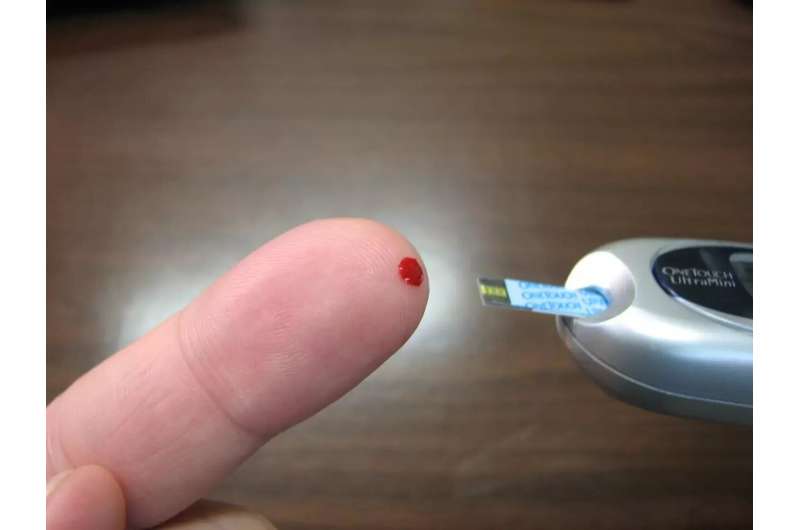This article has been reviewed according to Science X's editorial process and policies. Editors have highlighted the following attributes while ensuring the content's credibility:
fact-checked
peer-reviewed publication
trusted source
proofread
Study highlights need for improved treatment in autoimmune diabetes in adults

To reduce the risk of complications, it is important to measure antibodies in individuals who develop diabetes in adulthood, while also considering the levels of these antibodies.
In a recently published study in Diabetes Care, researchers at the Institute of Environmental Medicine (IMM), Karolinska Institutet, along with researchers from the Universities of Lund and Helsinki, demonstrate that individuals with Latent Autoimmune Diabetes in Adults (LADA) have an equally high risk of developing cardiovascular disease as individuals with type 2 diabetes, but a higher risk of developing retinopathy (disease of the retina) and poorer glucose control. Many also lack adequate treatment.
LADA is a common but relatively unknown form of diabetes. Similar to type 1 diabetes, it is an autoimmune disease characterized by antibodies against insulin-producing cells. It develops in adulthood, and the autoimmune process progresses more slowly than in type 1 diabetes.
LADA also shares features with type 2 diabetes, which means those affected risk getting the wrong diagnosis if antibodies are not measured. Incorrect diagnosis can result in inadequate treatment. Previous studies suggest that between 5% and 10% of all individuals initially diagnosed with type 2 diabetes actually have LADA.
"Our results emphasize the importance of diagnosing LADA correctly and careful monitoring of glucose control in these individuals, so that treatment can be intensified if needed, thereby reducing the risk of complications," says Yuxia Wei, Ph.D.-student and Sofia Carlsson, senior lecturer, IMM.
According to the study, LADA was characterized by fewer metabolic risk factors than type 2 diabetes, such as high blood pressure and high blood lipids. However, a lower proportion of individuals with LADA achieved good glucose control. The lack of glucose control was most evident in LADA patients with high levels of the antibody GADA (glutamic acid decarboxylase antibody). A significant portion of individuals with LADA lacked any glucose-lowering treatment.
The results of the new study are based on the ESTRID study, where researchers followed over 4,000 individuals with diabetes (including 550 with LADA) for up to 12 years after diagnosis. According to the researchers, it is the most comprehensive study to date regarding the risk of complications in LADA.
More information: Yuxia Wei et al, All-Cause Mortality and Cardiovascular and Microvascular Diseases in Latent Autoimmune Diabetes in Adults, Diabetes Care (2023). DOI: 10.2337/dc23-0739



















